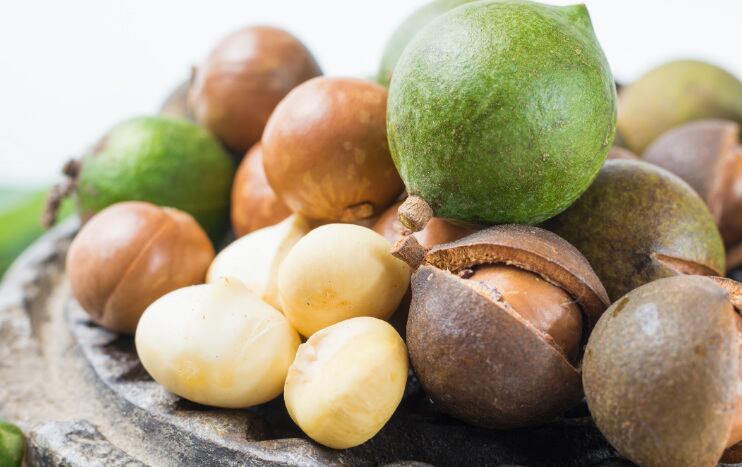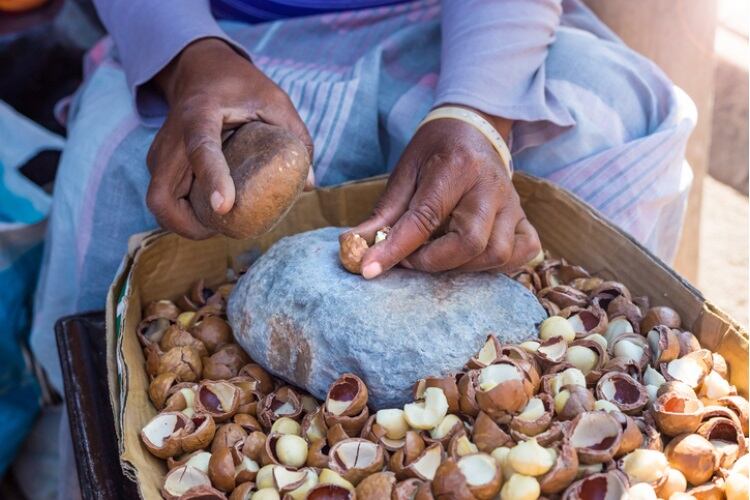The marketing partnership aims to take ‘a long view’ of the macadamia market, particularly in supply growth, shifting consumer expectations and planning.
Macadamias are most often used in baking, snacks, confectionery and ice cream, according to the Agricultural Marketing Resource Center (AMRC). They are high in protein, fiber, manganese, potassium and ‘good fats,’ per data from the International Nut and Dried Fruit Council, the latter of which has grabbed the attention of the health and nutrition industries.
G&G will now account for 20% of global macadamia sales while promoting its growing business in Australia, South Africa, Kenya, Malawi and Brazil.
"This scale enables the possibility for ingredient organisations to launch new macadamia products that may have been difficult to do without supply guarantee in the past," Graham Mclean, managing director of agriculture at Camellia told BakeryandSnacks.
"The macadamia industry is going through unprecedented change," he said. "Due to plant based eating trends, and ethically feeding a growing population – the demand for all nuts, including macadamias, continues to increase. This maturation of the industry requires a strategic and sophisticated approach to how macadamias are sold from snack grades through to the ever growing ingredients market."
Camellia – the world’s second largest macadamia producer at 3% of global production – has produced the nut in Malawi since the 1980s and more recently in South Africa and Kenya, where it plans to more than double its orchard footprint over the next ten years.
"The entire macadamia crop from Maclands is produced exclusively from our own orchards and processing facilities," added Mclean. "With this level of vertical integration, we can demonstrate complete traceability throughout our supply chain, resulting in a high-quality, desirable product."
In partnering with G&G, Camellia can 'access a variety of markets' while responding quickly to customer demands and product requirements, including value-added qualities.
The 130-year-old company also farms pistachios and almonds in California, among other specialty crops. For macadamias, it hopes to leverage G&G’s ‘direct relationships’ with important clients and retailers to augment supply in a more demanding marketplace.
As with all nuts, healthy eating habits is driving business forward, "but the demand for macadamias is multi-layered," a spokesperson for G&G added. "Consumers connect macadamias (as a brand) with premium/luxury/special, and this consumer perception is now being leveraged by major food manufacturers."
G&G's internal data points to macadamias playing a notable role in the plant-based alternative market.
A unique, expensive nut
Global supply of the creamy, tropical nut has doubled in the past five years, and the International Nut Council expects it to double again by 2023.
The companies cited consumers’ rising interest in plant-based foods and healthy eating as one reason for such growth. Consumers are also far more ‘discerning and sensitive’ to sustainability and ethics in food production, they said.
Macadamias are especially expensive to grow because high-quality nuts fall from only mature trees: they reach full production in 12 to 15 years but can last up to 40 years, according to the AMRC.
In addition to lower yields, macadamia trees require more maintenance than other nuts. Their fruits are harvested manually after falling to the ground, unhusked nuts last barely a single day, and the net weight after husking and drying hits between 25% and, ideally, 35%.


